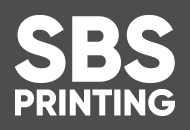Are you considering a rebrand? If you’ve been through a major change in your business a rebrand can be an effective way to communicate this to your customers and more importantly, to make sure your message is simple and focused.
Rebranding can be time-consuming and expensive, however, so it’s important to get it right.
We pulled together our top tips for rebranding into a simple 7 step plan. Read on to find out how to make the most out of your rebranding.
Step 1: What are your goals?
People often go wrong with rebranding by not considering from the start what they want to achieve. The best place to start is with your WHY. What are your reasons for rebranding? These often fall into one of the following categories:
• Major change in the business such as a merger, expansion or new management
• A change in target market or the goods and services offered by the company
• The current brand isn’t considered strong enough to compete in the market
• The desire to attract new customers
It’s important to be clear about the business reason behind your rebranding in order to avoid wasting resources.
Step 2: Do your research.
What is the current perception about your brand? What do customers think it stands for? Does this reflect the message you want to put across? It’s important to consider the views of stakeholders and customers from the start. If you keep your rebranding process internal there’s a strong chance you’ll just regurgitate current ideas in the business and might miss opportunities.
It’s also important to research your target customers thoroughly, particularly if you’re aiming to break into a new market. What is important to your customers? What appeals to them? What problems are they looking to solve? What will draw them in?
During your research phase, don’t forget to check out what your competitors are doing with their brands. This is vital information to make sure your brand identity can be clearly differentiated from others in the market.
Step 3: Define your market positioning.
Use the information gathered in your research phase to define where you fit in the current marketplace. Are you providing bespoke, high quality services or aiming to be the most cost-effective brand in the market? Are you aiming to lead innovation in your industry or provide tried and tested solutions? Ensure your positioning is distinctive and relevant. Create a clear and succinct positioning statement that is easy for staff to communicate and customers to understand.
Step 4: Create a brand identity.
Now you’re ready to pull together all the information to create your brand identity and record this in a guidelines document. Essentials should include; logo, tagline, colours, fonts, style guidelines for printed and online marketing materials, images. Remember, branding should be consistent across all marketing channels to ensure your message is focused and consistent. Create designs that can be used in different formats and get feedback from stakeholders to see how they are perceived.
Step 5: Rebrand your online marketing tools.
In today’s market, your website is your most important tool as it can be used both to attract people to your business and provide a clear targeted message to your prospective customers about what you stand for and what you can do for them. Because of this your website must be consistent with your brand identity.
Social media can also be used to drive traffic to your website and your business. Make sure it’s as professional as all your other marketing channels and provides a consistent message.
Step 6: Create quality printed marketing materials.
We may live in a digital age, but don’t underestimate the power of printed marketing. Business cards, brochures and flyers are often the most effective way to communicate with potential customers and should also reflect your brand. Printed materials are essential for trade shows and can be made available at places where your customers will find them in a format that’s easy for them to consume.
Step 7: Go live!
Ensure your staff are up to speed with your rebranding and can answer questions from customers fully. Create a buzz around the rebrand for staff and customers and ensure you promote it through blog posts, social media, emails and in printed materials.
Need help with your rebranding? Let’s chat! As well as taking care of all your business printing we’re also experienced marketeers and can help you create a bespoke brand identity that meets your business goals. We look forward to helping you soon.
